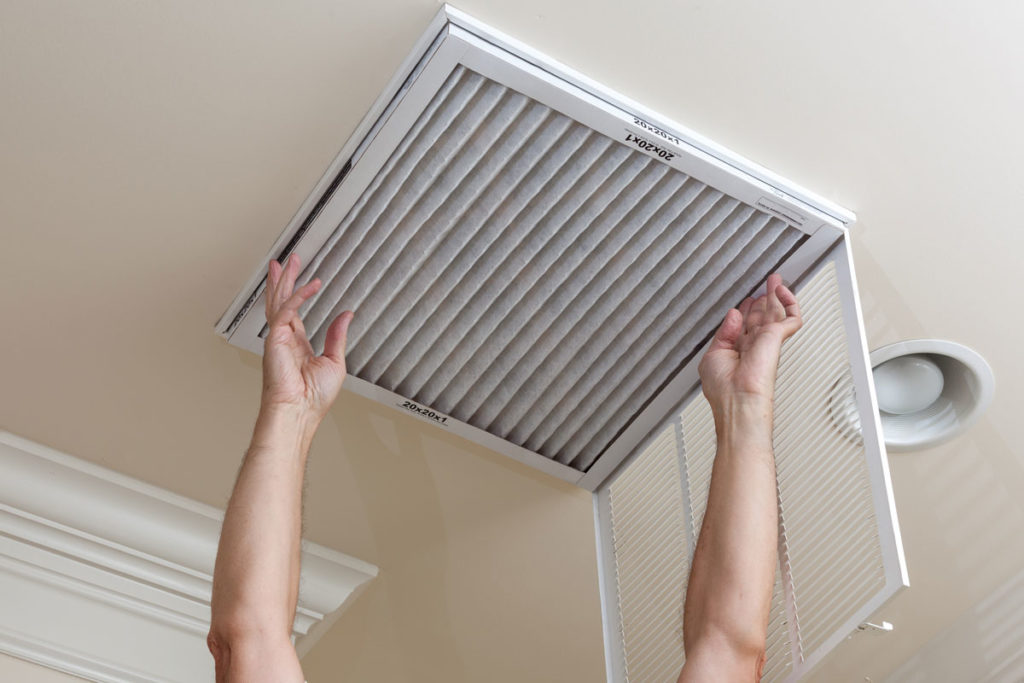
Maintaining Your Air Conditioner | Air Conditioning Repair in Garland, TX
The amount of maintenance a homeowner can perform on an air conditioner is rather limited, but some simple, easy to perform steps can breathe new life into an older, poorly performing unit or those that produce foul odors.
Keep your air-conditioner (AC) well maintained and you’ll not only save money on energy, but you’ll also extend its lifespan, saving money on costly early replacement.
During the summer, air conditioning can cause high electric bills, and I would hate to think that you might be spending more money on electricity than you should. If you have central air conditioning, here are 10 ways that you can take care of your air conditioner to keep it running efficiently, which will save you money.
Change your air filter every 3 months
The most important maintenance task that will ensure the efficiency of your air conditioner is to routinely replace or clean its filters. Clogged, dirty filters block normal airflow and reduce a system’s efficiency significantly. With normal airflow obstructed, air that bypasses the filter may carry dirt directly into the evaporator coil and impair the coil’s heat-absorbing capacity. Replacing a dirty, clogged filter with a clean one can lower your air conditioner’s energy consumption by 5% to 15%.
When you replace the air filter, there’s an arrow on the side that indicates which direction to place the air filter. The arrow shows the way the air flows through the filter into the unit.
For central air conditioners, filters are generally located somewhere along the return duct’s length. Common filter locations are in walls, ceilings, furnaces, or in the air conditioner itself. Room air conditioners have a filter mounted in the grill that faces into the room.
Some types of filters are reusable; others must be replaced. They are available in a variety of types and efficiencies. Clean or replace your air conditioning system’s filter or filters every month or two during the cooling season. Filters may need more frequent attention if the air conditioner is in constant use, is subjected to dusty conditions, or you have fur-bearing pets in the house
Check Wiring and Components
Before working on an air conditioner, ALWAYS start by turning off the power to the unit, which can be done at the service disconnect on your outdoor unit or at the main breaker panel of your home.
Old wiring inside AC unit. Next, remove the access panel on your condensing unit and see if you see any signs of overheating – melted insulation on wires, blackened or burned-looking wires, and the like.
You can also check any electrical connections to make sure they are tight. If you own an electrical test meter, you can check the capacitors in the unit.
Take a look at the contactor switch, and replace it if you see excessive pitting.
If you see any of the above problems and do not feel comfortable replacing the parts yourself, always call a local heating and air conditioning expert to do the work for you.
Buy pleated filters
Spend a couple of dollars more to buy pleated synthetic filters, not the cheapest fiberglass filters. To get a good filter for a good price, Doug recommends the True Blue pleated air filters at Home Depot with a Filter Performance Rating (FPR) of 5. (He thinks the filters he saw at Lowe’s are overpriced.)
Set your thermostat at a normal temperature
Don’t turn your thermostat all the way down. That won’t help your house cool down faster; it will just make your AC work longer.
Check Condenser Unit Fan
Turn the power off to your air conditioner unit, and check the fan mounted on the top of the outside condenser unit to make sure it’s still in good condition. Replace the fan blades if there are any cracks or chips visible in one or more of the blades.
If you have an older air conditioner unit, the fan motor bearings may need to be oiled regularly as well.
Check your ductwork for leaks
You don’t want all the cold air to leak out into your attic, so check to see if you notice any holes where air escapes. There are two common types of ductwork: flexible ducts and rigid metal ducts. Flexible ductwork is often used because it’s faster to install, but it doesn’t last as long. Metal ductwork lasts longer. If you have holes or leaks in your flexible duct, it’s time to replace it. If you have a leak in metal ductwork, you can seal it with…can you guess? Duct tape. (Yes, that is why it’s called duct tape.)
Insulate your ductwork
Ducts usually run through the attic, and it gets hot up there. It’s worth investing money in an extra wrap of insulation around the ducts. Get the insulation wrap that is backed with foil, not plastic, because the plastic breaks down over time.
Clean your outside unit annually
Dirt and debris build up on your outside unit (the condenser), which blocks airflow and makes your air conditioner work harder. Once a year you want to wash off the debris; first turn off the power, and then you can use a garden hose. Gently rinse it so the water cleans between the thin metal fins on the condenser. (You don’t want to spray against the fins because they can bend easily.)
Secure your outside unit
Your outside unit is a target for theft. It’s not that they want the air conditioner itself, but the copper inside is valuable and can be sold as scrap metal. Keep your unit out of view with hedges or a fence that will also provide shade for high efficiency, but take care not to block the airflow. You can also bolt it down to the concrete base.
Collect free water
Air conditioners create a lot of condensate from the air, and that water drips out of your house from the condensate line. During the summer months, our air conditioner puts out over five gallons of clean water from the air every day. Set a water barrel on the side of your house under the condensate line to catch the drips, and use that to water your landscape.
Preparing for winter
In the winter, either cover your room air conditioner or remove and store it. Covering the outdoor unit of a central air conditioner will protect the unit from winter weather and debris.
The technician should:
- Check for correct amount of refrigerant
- Test for refrigerant leaks using a leak detector
- Capture any refrigerant that must be evacuated from the system, instead of illegally releasing it to the atmosphere
- Check for and seal duct leakage in central systems
- Measure airflow through the evaporator coil
- Verify the correct electric control sequence and make sure that the heating system and cooling system cannot operate simultaneously
- Inspect electric terminals, clean and tighten connections, and apply a non-conductive coating if necessary
- Oil motors and check belts for tightness and wear
- Check the accuracy of the thermostat.
If you are facing a problem with your heating and ac in Garland, TX, you might be facing some of these issues. Don’t hesitate to call K & S Heating and Air to have professionals take care of your HVAC system.
